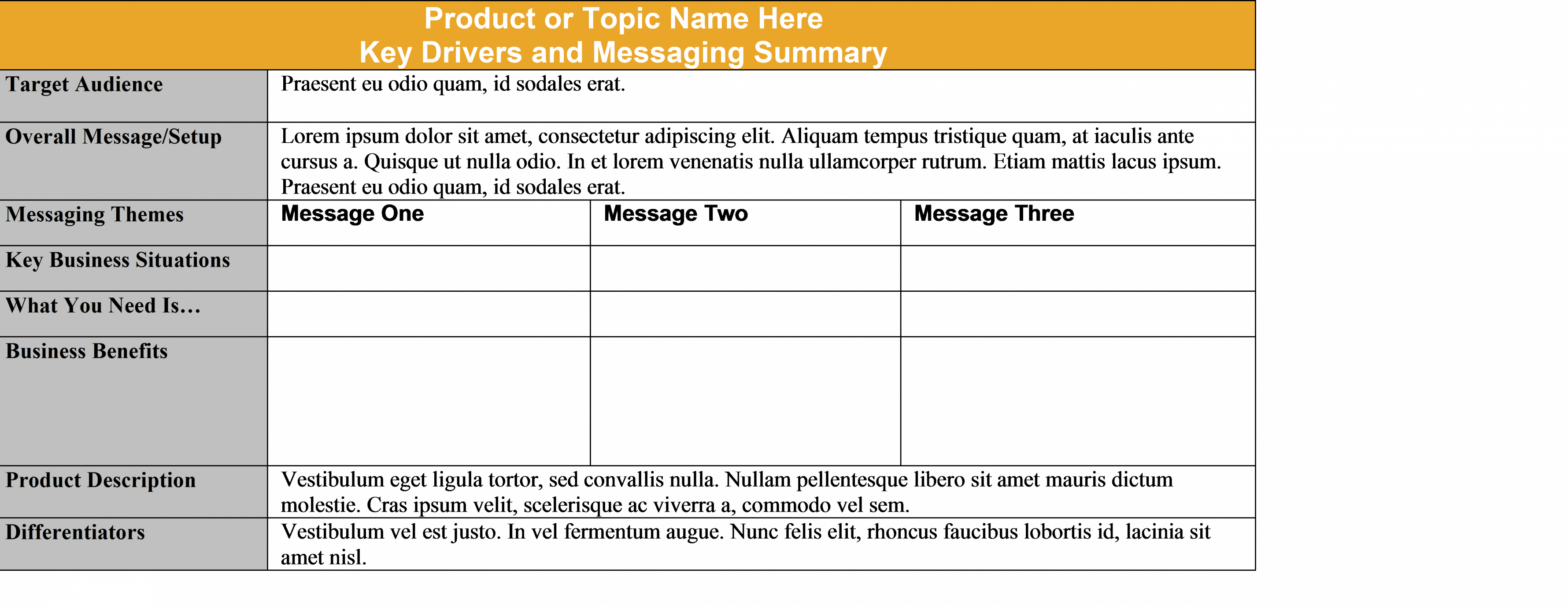You’re tasked with creating solid and rich marketing messaging. Suddenly, everyone around you wants to weigh in on content—and the “messaging madness” ensues.
Whether you’re developing the foundation for a multiproduct campaign or creating detailed product descriptions to support your latest release, the most time-consuming aspect of the process is getting agreement around central themes. It requires you to corral the opinions of multiple interested parties and stakeholders—and determine (delicately) whose input must be incorporated.
Following are some tips to set you on the surest path to reaching agreement:
Include all key stakeholders from the start. Early on, identify essential stakeholders and notify them of the messaging project. Get their buy-in for objectives and timelines, and ask if others need to be included. (There’s nothing worse than a surprise high-level reviewer in what’s supposed to be the final round.) Your main point of contact on the project should have the authority to make decisions on whose opinions matter most.
Simplify the process. Be very clear about your messaging boundaries. What content is in, and what’s out? If you’re focusing on a single product or service, cut everything else.
Solicit feedback in a structured way. Once you collect all necessary input documents, create and circulate a messaging grid for stakeholder review. The messaging grid—like the one shown below—is a great tool for framing the discussion and giving reviewers the context they need to easily review and comment on the messaging as it’s being created. Incorporate comments and seek final approval on the grid; the approved grid will serve as input for your taglines; and your short, medium, and long copy blocks.

Messaging grids can be customized for each project, but typically start with the business situation or background. Why should the reader care about this topic? How is it relevant to the reader’s business? Within the grid, reviewers can quickly focus on their area of interest and expertise. For example, the techy reviewer can identify the technical themes and the industry expert can focus exclusively on industry sub-themes.
Once the business situation/background is established, you’re ready to detail the product or service particulars, including features, functionality, benefits, and competitive differentiation. Identifying three key themes or messages is often a good way to frame the discussion. Remember to be “MECE” (mutually exclusive and collectively exhaustive) with your topics. This will help you to present clear, logical messaging—and should smooth the approval process.
Next time you’re struggling to get stakeholders on the same messaging page, focus on getting them on the same messaging grid, instead.


